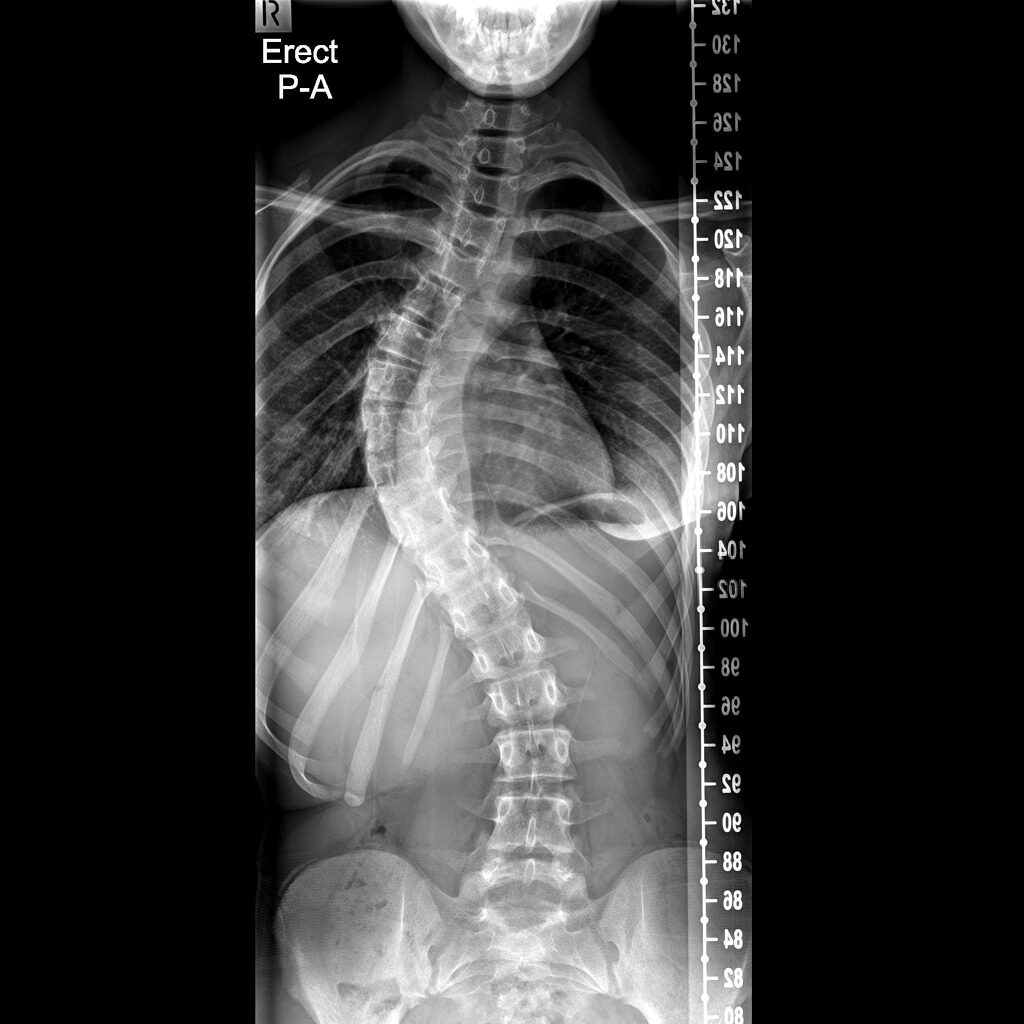What is Scoliosis?
Scoliosis is a common condition for many patients, young and old. In simple terms, it is a sideways (lateral) curve of the spine. There are multiple types and it is even possible to have multiple curves in the spine. But when should scoliosis be treated? Is scoliosis even a problem?

What Causes Scoliosis?
There are several causes for scoliosis, each with their own challenges and treatments. The first is congenital; an abnormality during spinal development before birth. As this occurs from birth, they are often diagnosed early and managed more effectively.

At the other end of the spectrum is degenerative scoliosis. Over time, discs can wear unevenly. As a result, it is possible for the process to accelerate in a cycle: degeneration leads to scoliosis which leads to accelerated degeneration.
Next is neuromuscular scoliosis. This type occurs as a secondary problem of an underlying condition such as muscular dystrophy, cerebral palsy, or even as a compensation for spinal subluxations.
Unfortunately, the last type of scoliosis is idiopathic and is the most common. Simply, we do not know what causes the body to react and distort. While this is often frustrating for doctors and patients, the extent of scoliosis varies wildly. So the question remains, how and when does scoliosis need treated?
Adjusting Patients with Scoliosis
Chiropractors can adjust many types of scoliosis by hand or with a tool. The key to adjusting within a scoliosis is to avoid movements that have a high likelihood of increasing the lateral curve. However, some curves may become too unstable over time for adjustments to be done safely. Physical changes in the spine, such as a congenital scoliosis, can be limiting factors. Because each case is different, each one will require x-rays and an exam to treat effectively.
Scoliosis Treatments
Generally, treatments for scoliosis vary depending on the severity. A curve that measures less than 10 degrees on x-ray does not warrant additional care. A lateral curve is only considered a “scoliosis” above 10 degrees. These are extremely common in chiropractic offices and are usually unknown to the patient.
As scoliosis progresses from 10 to 20 degrees, low intensity exercises are prescribed. These exercises focus on mirroring the scoliosis to reduce the curvature. Follow-up x-rays will be necessary to monitor any changes.
Should curvature continue to increase from 20 to 40 degrees, physical braces will be worn through maturity. Braces will support the spine to develop normally. Additional, more intensive exercises will be required.
Finally, surgical fusion is recommended for curves over 40 degrees. Without surgery, long-term pain, dysfunction, and other complications can arise. These surgeries are often required for idiopathic scoliosis in the early teen years, particularly in girls.
Other details of each case may change these guidelines. For example, curves to the left are more dangerous than curves to the right due to the potential of pressing on the heart. Regardless, it is important to start care and monitor progress regularly to avoid future complications.
To learn more about the spine, check out our other blogs here.

